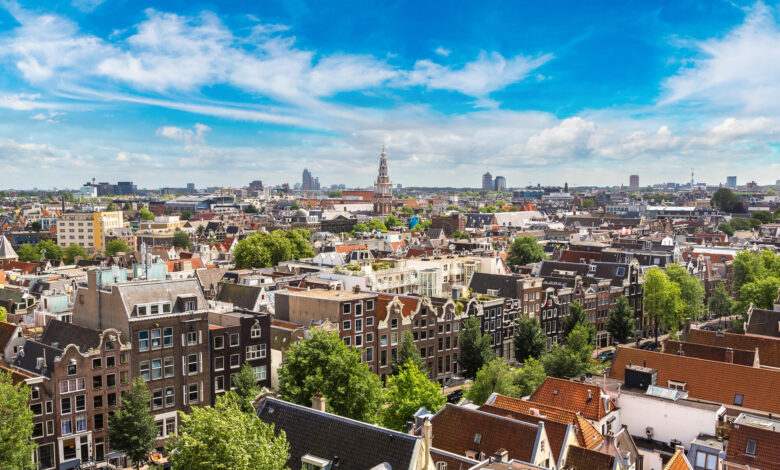
Why the Netherlands has such a high population density
The Netherlands lies in the heart of Western Europe, renowned for its rich cultural heritage, iconic windmills and sprawling tulip fields. Beyond its idyllic landscapes, the Netherlands boasts another remarkable feature: its extraordinary population density. With a population density of approximately 522 people per square kilometer, the country ranks among the most densely populated in the world. Home to over 17 million people, the Netherlands captivates scholars, urban planners and curious minds alike with its unique demographic landscape. But what factors contribute to the Netherlands’ high population density?
Historical land reclamation
A significant factor in the Netherlands’ demographic development is its history of land reclamation. Much of the country’s territory has been reclaimed from the sea through a process known as poldering. This centuries-old technique allowed the Dutch to expand their inhabitable territory, creating fertile agricultural lands and space for settlements. However, these reclaimed areas are often flat and densely populated due to the limited land area available.
Urbanization and cities
The Netherlands is a highly urbanized country, with a significant portion of its population concentrated in cities and metropolitan areas. Cities like Amsterdam, Rotterdam, Utrecht and The Hague are densely populated urban centers that serve as hubs of economic, cultural and political activity. These cities are not only heavily populated but also attract migrants from within and outside the Netherlands, further increasing their density.
Small land area, high population
Despite its relatively small land area of approximately 41,543 square kilometers, the Netherlands supports a large population. This limited space combined with a high number of inhabitants results in one of the highest population densities globally. Every corner of the Netherlands, from urban centers to rural landscapes, is efficiently utilized to accommodate its growing population.
Agricultural intensification
Dutch agriculture is renowned for its efficiency and innovation, making the Netherlands one of the world’s leading exporters of agricultural products. Even in rural areas, the population density is high due to the prevalence of farms, greenhouses and agricultural businesses. This intensification ensures that rural regions remain actively populated and economically productive.
Transportation and connectivity
As a transportation hub for Europe, the Netherlands is home to major infrastructure networks, including Amsterdam’s Schiphol Airport, the Port of Rotterdam and extensive rail and road systems. These hubs not only support economic activity but also attract populations to surrounding areas, contributing to the overall population density of the Netherlands.
Economic opportunities
The Netherlands boasts a strong and diverse economy with thriving industries such as manufacturing, international trade, finance and technology. These economic opportunities draw individuals from across the globe, leading to a high concentration of population in economically vibrant regions. The country’s open and international outlook further enhances its appeal to expatriates and foreign workers, increasing its already dense population.
Why Is the Netherlands so populated?
In summary, the high population density of the Netherlands can be attributed to its small land area, innovative land reclamation practices and thriving urban and rural areas. The combination of historical ingenuity, modern infrastructure and economic vitality ensures that the Netherlands remains densely populated yet remarkably efficient in managing its resources. For those fascinated by urban planning or demographic studies, the Netherlands offers a unique and compelling case study.